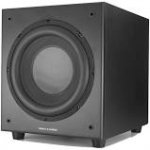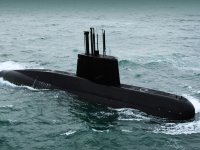Unless the cone was obviously pushed out from excess internal air pressure when you tried to push the cone in, most of the resistance you felt pushing the cone in was due to the suspension compliance (springiness).
You can verify that by pushing the cone in, waiting a bit for any air displacement to occur, then temporarily covering the 1.25mm hole.
My guess is the cone will still return to it's normal static position.
I really notice a little difference pushing the cone now that it's "compensated"
Perhaps it is that when I "sealed" them (I screwed the speaker) it was a day with atmospheric pressure very different from the current one .....
Now they seem SLIGHTLY "lazier"
Last edited:
Extra leakage lowers QL (the enclosure Q at fb resulting from leakage losses).
The result will be an imperceivable reduction of output in the lower registers.
I haven't auditioned them yet.
I'll see how different organ music sounds and I'll tell you ...
PS: Compensating will be easy if there is any difference, I have not yet used the equalizer of the Bheringer NX Edit software
Last edited:
I must try harder!However, English is only my second language after Scots!

In my case, English is just an understandable language with GT, which is fabulous, beyond some translation errors.
For example, subwoofer is translated as submarine !
Attachments
I believe this to be a non issue.
TEST:
Push the cone in by hand to a reasonable limit. Hold it there for a couple seconds.
Let go. How many seconds elapse before it returns? As long as it returns slowly, you have no issue with air pressure.
It is an 18 " PA subwoofer and its XMax is 6.7mm. It comes back immediately, it also did before the " pressure compensation " but the travel was somewhat less than now. Which shows that the purpose was achieved.
Thanks for the test.
I, too, don't consider this to be a non issue. With non-paper cones, and proper construction using sealants and/or plastic moulded enclosures, it is very possible to inadvertently create an enclosure that is hermetically sealed. This means that the air trapped in the enclosure has no way of adjusting to the air outside, and you end up with an exotic barometer/ pressure gauge. Ambient atmospheric pressure variations will have an effect - whether or not they will be significant is a different matter, depending on how much headroom you have with regard to the coil and suspension excursion limits.
The 1 mm hole drilled into the enclosure is a very good idea, but it needs to be located carefully, especially in a commercial design, else some over-enthusiastic salesperson is going to cover it with a fancy sticker - and you're right back where you started. I recommend drilling that tiny hole in the plate used for the speaker connections.
Of course, if you really want to go nuts over it, you could use something like this:
Brass Pneumatic Silencer , M5 - 2" Air Muffler For Pneumatic Valve
The 1 mm hole drilled into the enclosure is a very good idea, but it needs to be located carefully, especially in a commercial design, else some over-enthusiastic salesperson is going to cover it with a fancy sticker - and you're right back where you started. I recommend drilling that tiny hole in the plate used for the speaker connections.
Of course, if you really want to go nuts over it, you could use something like this:
Brass Pneumatic Silencer , M5 - 2" Air Muffler For Pneumatic Valve
Similar situation here!I must try harder!However, English is only my second language after Scots!

I had to unlearn "Australian"
Well, that's a bit dismissive, isn't it?Any box you make will be leaky enough to eventually let the pressure bleed off.
A sealed speaker does not need a tightness similar to an underwater capsule, as I already mentioned.
I have also mentioned the three weak points where there can be leaks.
Leaks are extended in the time, think in a tiny nail inserted into a tire. (modern, tubeless) and too weak to show the difference in atmospheric pressure from one day to the next.
That's why SL recommended the hole trick.
And yes, after a sudden change in pressure from a sudden storm, it can cause the cone / VC not to return to its perfect home position immediately.
The hole will make it faster. Only that.
It is not audible at all, doing it was a "perfectionist" type of satisfaction for me, what is the problem if it makes me happy?
I have also mentioned the three weak points where there can be leaks.
Leaks are extended in the time, think in a tiny nail inserted into a tire. (modern, tubeless) and too weak to show the difference in atmospheric pressure from one day to the next.
That's why SL recommended the hole trick.
And yes, after a sudden change in pressure from a sudden storm, it can cause the cone / VC not to return to its perfect home position immediately.
The hole will make it faster. Only that.
It is not audible at all, doing it was a "perfectionist" type of satisfaction for me, what is the problem if it makes me happy?
Last edited:
I have seen tiny pinholes in the edges of the domes of sealed mylar tweeters.
Well, tweeters are usually sealed and isolated from the internal volume of the cabinet, so it wouldn't matter at all ...
Tell us which tweeter is the one you have seen failed and the mounting of it in the cabinet, give us details.
Here is an example of how a gasket without a perfect seal can cause a catastrophe, luckily it is not my case ...
Space Shuttle Challenger disaster - Wikipedia
I can't find a hole in that argument!...what is the problem if it makes me happy?
Last edited:
You are definitely not imagining things, Pete!I have seen tiny pinholes in the edges of the domes of sealed mylar tweeters.
Vented Tweeter - A Solution To Provide the Cleanest, Most Articulate High-Frequency You'll Probably Ever Hear
The Problem the Vented-Tweeter Solves
Air build-up behind a tweeter dome results in excessive force pushing back on the tweeter dome which in turn develops unwanted harmonics.
I've just spotted that post. Thanks for the information, it is most helpful to our mutual understanding.In my case, English is just an understandable language with GT, which is fabulous, beyond some translation errors.
For example, subwoofer is translated as submarine !

I noticed earlier that you referred to the "wing" of a loudspeaker and I presumed that should have translated as "surround".
- Status
- This old topic is closed. If you want to reopen this topic, contact a moderator using the "Report Post" button.
- Home
- Loudspeakers
- Subwoofers
- Equalize atmospheric pressure in sealed cabinets

